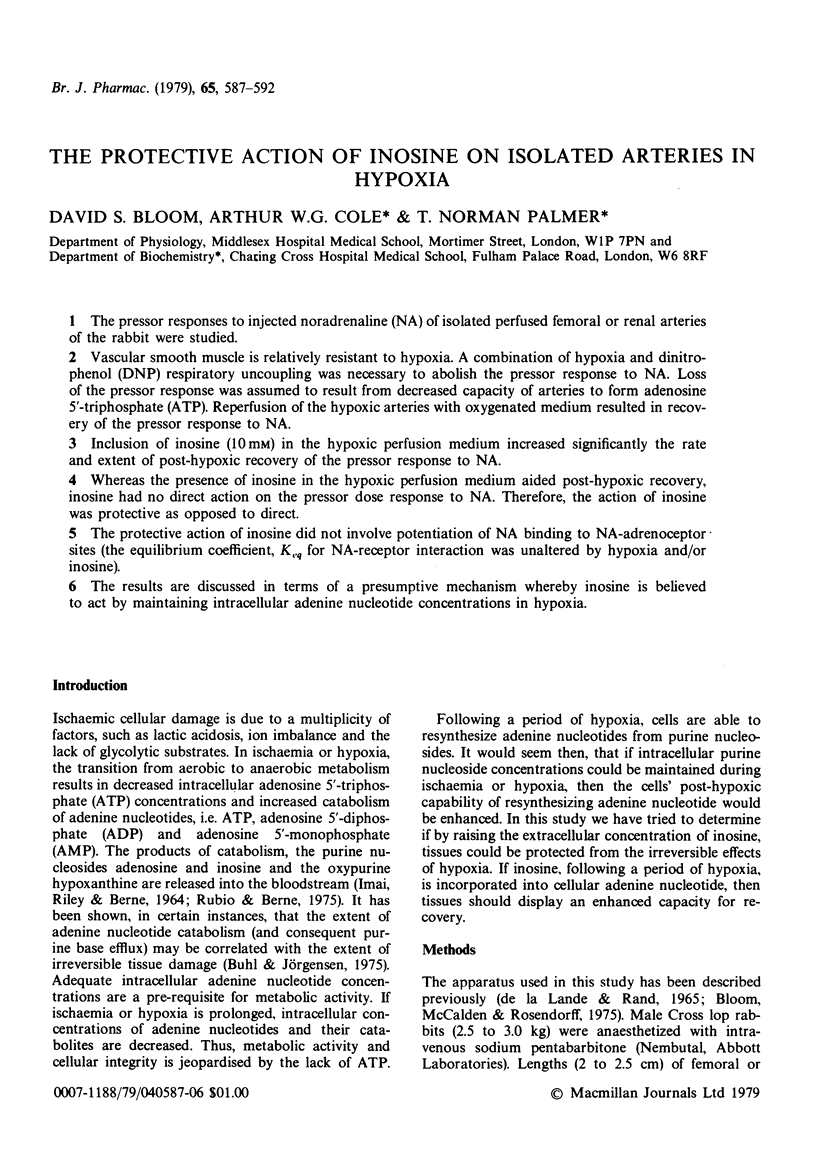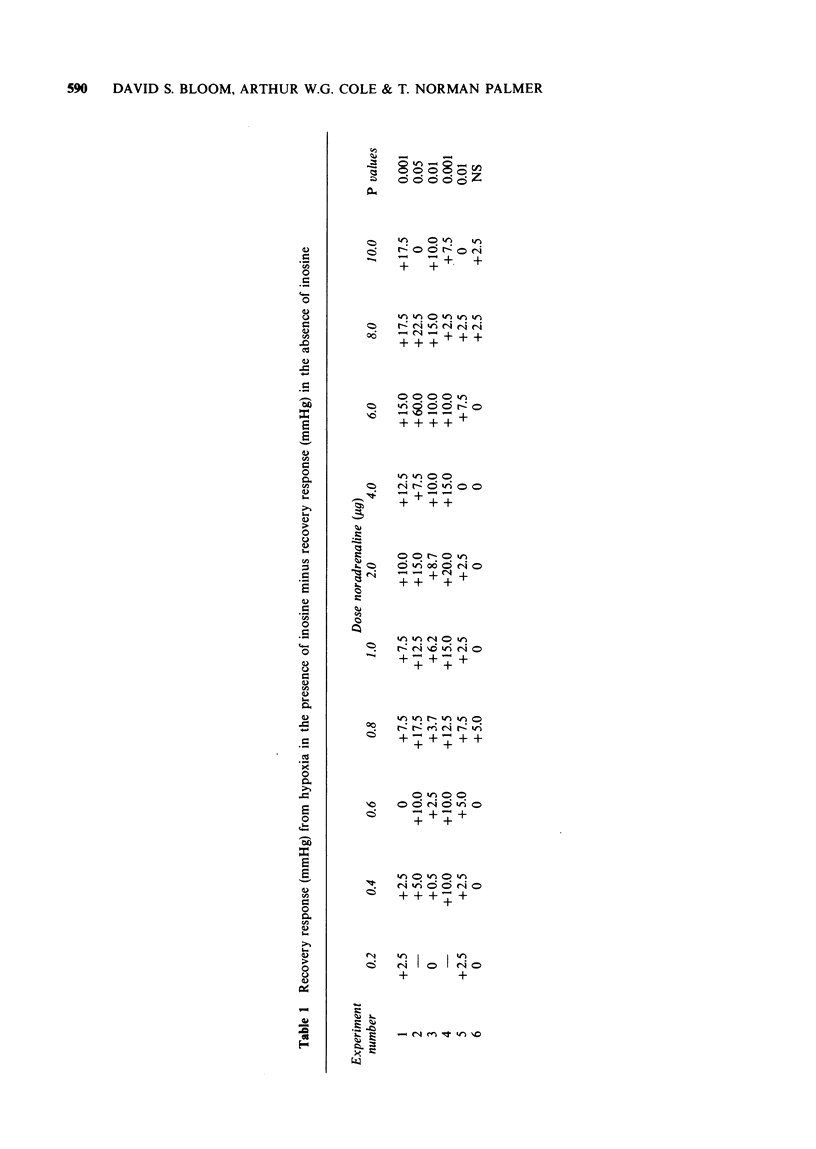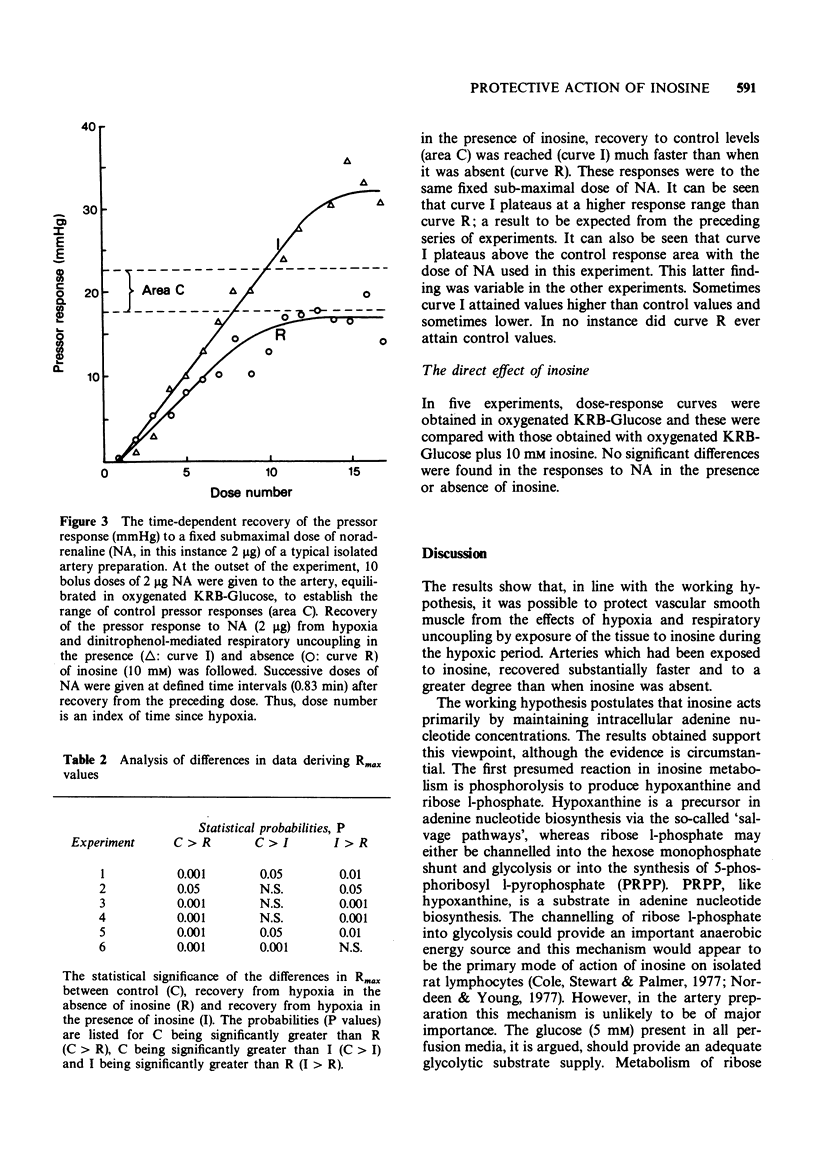Abstract
1 The pressor responses to injected noradrenaline (NA) of isolated perfused femoral or renal arteries of the rabbit were studied.
2 Vascular smooth muscle is relatively resistant to hypoxia. A combination of hypoxia and dinitrophenol (DNP) respiratory uncoupling was necessary to abolish the pressor response to NA. Loss of the pressor response was assumed to result from decreased capacity of arteries to form adenosine 5′-triphosphate (ATP). Reperfusion of the hypoxic arteries with oxygenated medium resulted in recovery of the pressor response to NA.
3 Inclusion of inosine (10 mM) in the hypoxic perfusion medium increased significantly the rate and extent of post-hypoxic recovery of the pressor response to NA.
4 Whereas the presence of inosine in the hypoxic perfusion medium aided post-hypoxic recovery, inosine had no direct action on the pressor dose response to NA. Therefore, the action of inosine was protective as opposed to direct.
5 The protective action of inosine did not involve potentiation of NA binding to NA-adrenoceptor sites (the equilibrium coefficient, Keq for NA-receptor interaction was unaltered by hypoxia and/or inosine).
6 The results are discussed in terms of a presumptive mechanism whereby inosine is believed to act by maintaining intracellular adenine nucleotide concentrations in hypoxia.
Full text
PDF





Selected References
These references are in PubMed. This may not be the complete list of references from this article.
- Bloom D., McCalden T. A., Rosendorff C. The effects of hypercholesterolaemic plasma on vascular sensitivity to noradrenaline. Br J Pharmacol. 1975 Aug;54(4):421–427. doi: 10.1111/j.1476-5381.1975.tb07587.x. [DOI] [PMC free article] [PubMed] [Google Scholar]
- Buhl M. R., Jörgensen S. Breakdown of 5'-adenine nucleotides in ischaemic renal cortex estimated by oxypurine excretion during perfusion. Scand J Clin Lab Invest. 1975 May;35(3):211–217. doi: 10.1080/00365517509095732. [DOI] [PubMed] [Google Scholar]
- Cole A. W., Stewart J. S., Palmer T. N. The protective effects of purine nucleosides on the release of intracellular enzymes in hypoxia [proceedings]. Biochem Soc Trans. 1977;5(6):1732–1734. doi: 10.1042/bst0051732. [DOI] [PubMed] [Google Scholar]
- De la Lande I. S., Rand M. J. A simple isolated nerve-blood vessel preparation. Aust J Exp Biol Med Sci. 1965 Oct;43(5):639–656. doi: 10.1038/icb.1965.48. [DOI] [PubMed] [Google Scholar]
- Fernando A. R., Armstrong D. M., Griffiths J. R., Hendry W. F., O'Donoghue E. P., Perrett D., Ward J. P., Wickham J. E. Enhanced preservation of the ischaemic kidney with inosine. Lancet. 1976 Mar 13;1(7959):555–557. doi: 10.1016/s0140-6736(76)90356-1. [DOI] [PubMed] [Google Scholar]
- IMAI S., RILEY A. L., BERNE R. M. EFFECT OF ISCHEMIA ON ADENINE NUCLEOTIDES IN CARDIAC AND SKELETAL MUSCLE. Circ Res. 1964 Nov;15:443–450. doi: 10.1161/01.res.15.5.443. [DOI] [PubMed] [Google Scholar]
- Juhász-Nagy A., Aviado D. M. Inosine as a cardiotonic agent that reverses adrenergic beta blockade. J Pharmacol Exp Ther. 1977 Sep;202(3):683–695. [PubMed] [Google Scholar]
- Kingaby R. O., Lab M. J., Woollard K. Restoration of function in ischaemic myocardium by inosine [proceedings]. J Physiol. 1977 Oct;272(1):102P–103P. [PubMed] [Google Scholar]
- Kypson J., Hait G. Effects of uridine and inosine on glucose metabolism in skeletal muscle and activated lipolysis in adipose tissue. J Pharmacol Exp Ther. 1976 Dec;199(3):565–574. [PubMed] [Google Scholar]
- Nordeen S. K., Young D. A. Separation of effects of adenosine on energy metabolism from those on cyclic AMP in rat thymic lymphocytes. J Biol Chem. 1977 Aug 10;252(15):5324–5331. [PubMed] [Google Scholar]
- Rubio R., Berne R. M. Regulation of coronary blood flow. Prog Cardiovasc Dis. 1975 Sep-Oct;18(2):105–122. doi: 10.1016/0033-0620(75)90001-8. [DOI] [PubMed] [Google Scholar]


